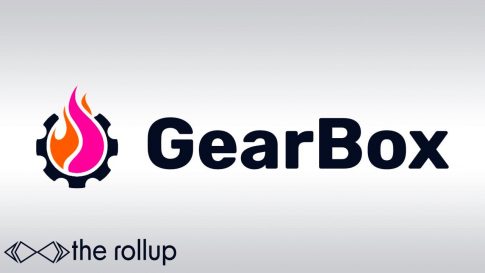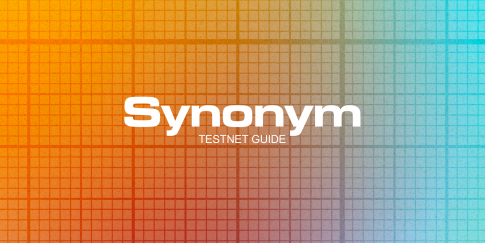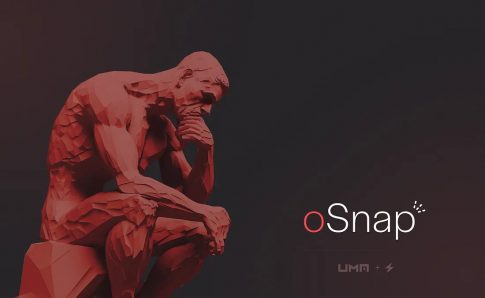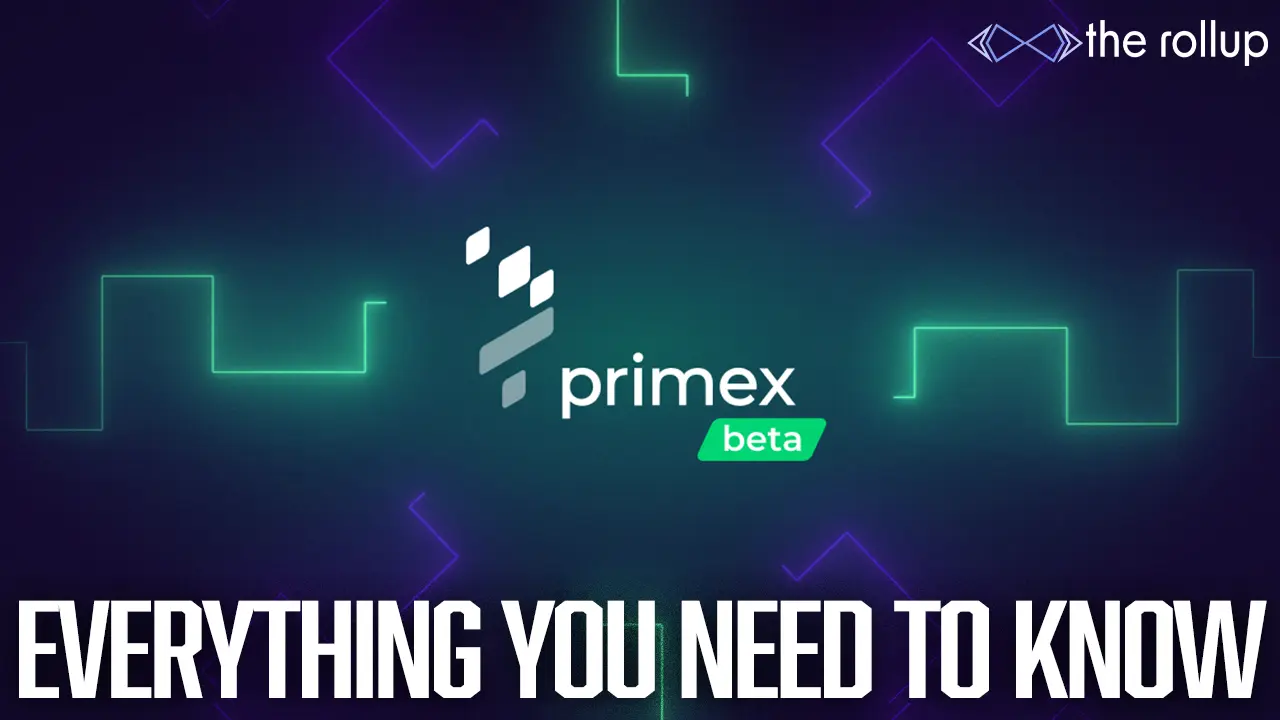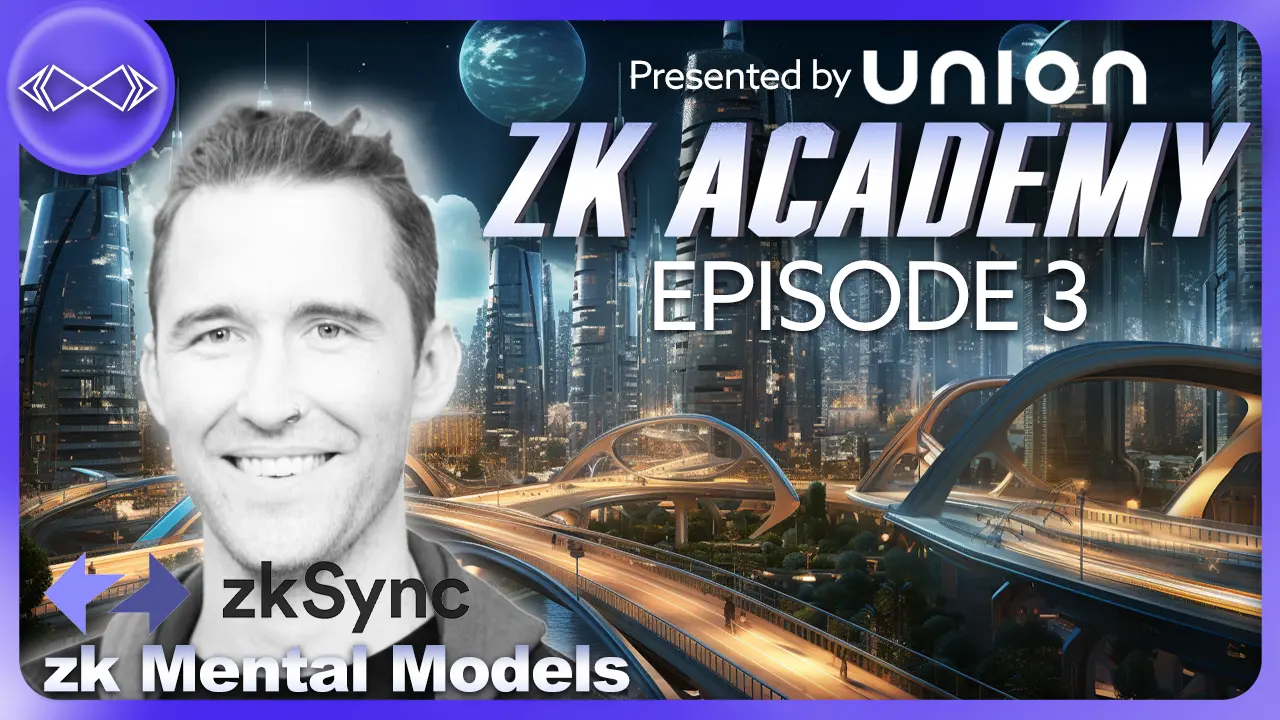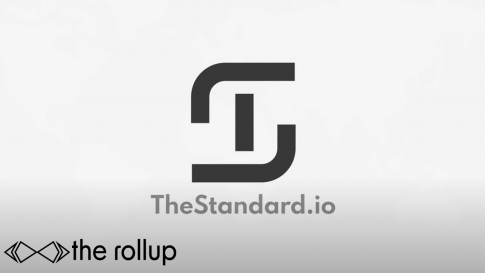Explore DeFi Asset Management Capabilities.
 Trade BTC, ETH, AVAX and other top cryptocurrencies with up to 30x leverage directly from your wallet (& save on fees using our link HERE)
Trade BTC, ETH, AVAX and other top cryptocurrencies with up to 30x leverage directly from your wallet (& save on fees using our link HERE)

DeFi Slate Fam:
Token2049 was an amazing time in London last month!
I had the pleasure of talking to tons of DeFi builders and getting the pulse of the current market.
In todays post we have a Q&A with Zaki from Sommelier Finance, a Cosmos based project that has tons of potential to unlock asset management capabilities in DeFi.
Enjoy!
Cheers,
Andy
Building The Cosmos Ecosystem With Sommelier Finance

Zaki: Billion dollars missing. I would be like. That makes sense. Yeah, I could see how that happened.
Andy: It’s supposed to be 8 though, right?
Zaki: I don’t understand. Where they could have lost $8 billion dollars
Andy: It ‘s nuts.
Zaki: Right, it doesn’t. Make any sense?
Andy: I mean, and the tweets that I’ve seen on Twitter are so upsetting. It’s like I just lost eight figures. Seven figures or five figures? But how did they lose it all? The market wasn’t that bad.
Zaki: Like who would be the counterparty on a trade that you could have lost that much money?
Andy: Yeah, apparently Alameda or they lend them, they lent it to Alameda for billion or something. I don’t know. It’s going to be interesting when it all comes out. There’s a guy who’s writing a book about FTX’s success.
Zaki: Michael Lewis, yeah. Who wrote flash boys.
Andy: So how long have you been involved in, like, the cosmos world?

Andy: Nice, so you’re aware of a Agoric and their new interstable token.
Zaki: I’ve worked on it.
Andy: We talked to Dean like 2 weeks ago about it. He seems pretty cool.
Zaki: Mostly pretty glad. At this point that we launched with just the parity stability module, now we and like bolts aren’t locked yet, yeah.
Andy: Well, it was unfortunate for Cosmos for a while was that UST was the only stable coin. That was a big downfall.
Zaki: Yes, It was a big, I mean it was huge. At the time, like when it collapsed, I kind of felt like maybe fatally. Maybe fatal.Andy: I mean, yeah, it was a bummer for me. I had a good bit in Cosmos and I knew it was like the market was gonna take a poop like. March. February so I just put it all in the USA and I just sucks.
Andy: I mean it was a boomer for me. I had a good bit in Cosmos. There was the euro stable coin as well-
Zaki: Now we have considerably more stable coins diversity. I mean, it was just sort of a thing, right? It’s like Axor got started, but like Adam and Osmo were a big component of the anchor carry trade. Like a lot of people realized that you could get into anchor without paying any gas fees, through anchor, Osmo UST dilution. That was actually a very capital efficient way to move into Anchor. Fast way, it was very capital efficient and you know billions of dollars flowed from that.
Andy: Yeah, it’s interesting.. You’re obviously pretty bullish on the idea of absolute chains. So why do you think that absolute chains are better than like let’s say modular blockchains that have all different apps in one layer but still separate the execution and settlement. Why even absolute chains are better or do you?
Zaki: We have strongly suspected for a long time that the natural order of the world is application specific blockchains, whether you plan to build an application specific blockchain or not. So because there are network effects around very similar use cases being clustered together. It’s very valuable to have a lot of different DeFi applications in Ethereum. t’s not super valuable to have like NFT’s and DeFi co located in the same environment. So we think specialization is the natural course of things.

So what we figured out all the way back in like 2015 was the combination of tendermint Cosmos SDK and having IVC is a built in bridge interoperability framework, that would allow people to build application specific projects. So if you kind of think of like what do people need to build a blockchain, one is they need some toolkit to produce blocks to write like what the blockchain does. And then they need a bridge layer to essentially settle with other chains. So Cosmos and specifically the tendermint Cosmos SDK, IBC staff is a way of building an application specific project, but we don’t think it’s going to be the only way. We think that there are going to be a lot of other ways to build application specific contracts.
There were a number of people, were trying to build toolkits for blockchains, but only the Cosmos SDK and substrate got any meaningful adoption. Substrate is a somewhat inflexible environment that basically only really super works for building Polkadot parachains, whereas the Cosmos SDK is more flexible. The toolkits for building modular blockchains are still in the very early days. Like how to build sequencers, how do bridges work in modular blockchains? How does composability work? What are the toolkits for building a fraud provable or zero knowledge provable system? Everything in that world is super early days and so Cosmos is a mature system. It has a full set of features. So, where the cosmos chain system falls apart in my mind is really when we say well..”could we imagine a world in which there were 10-100 thousand, a million blockchains using the Cosmos SDK? Interoperate. And then it gets tricky. Because, fifty 105 hundred block chains. You can see where the validators are. People could participate in governance. You have this both formal and informal community mechanisms can manage the system right.

Andy: 15,000
Zaki: But if there’s 10,000 or 15,000, you know.
Andy: Chains, yeah.
Zaki: For this dragon, we have this security vulnerability that’s not fully disclosed yet, but it’s called Dragon Berry. You can’t really talk about what it was, but in order to fix it.
We, the Cosmos team, had to patch 50 blockchains in 24 hours. And we did it. No one exploited it.
Andy: But if it was 500,000 that’d be a problem.
Zaki: I don’t think we could have done it this way, right?
Andy: That’s what I’m saying. Like having all the apps on one chain could help.
Zaki: So when you sort of start imagining where the modular stack is going. I think the modular stack is the next level up of the application specific blockchain building system.
It moves around a lot of the components of the system. Like you might in a module or blockchain ecosystem. Validators might primarily be about bridges rather than about block prediction. If you were to draw out the diagram of what you think the module or blockchain future looks like and like when I sit with the Celestia team, we do that and it’s like, and there’s still so many places there, it’s like we don’t really know what goes there.
Andy: Celestia’s launching pretty soon. I think sometime this quarter, that’ll be exciting for sure. You make some good points on the modular side as well ,versus the app specific chain side. Seems like just maximum applications on the app specific side could cause a little bit of hindrance for scalability with Cosmos, but we haven’t really got there yet. I haven’t really seen that fall out and also, we haven’t really seen yet that big of adoption of like Ethereum layer 2 necessarily yet. So like that modular chain thesis hasn’t super played out. I mean, there’s definitely some activity there, but dramatically less.
Zaki: I mean, right now optimism doesn’t have any fraud proofs. No fraud proofs. Completely trusted bridge. Arbitrium has fraud proofs, but only the arbitrary team can submit fraud proofs. The only permissionless layer modular execution system is fuel V1 which no one uses.
Andy: Yeah, I’ve never even heard of it. What about ZK tech?
Zaki: I mean again, ZK tech is super interesting. The the Stark, where people’s vision is basically the cosmos vision.

Andy: Yeah, it’s kind of what I realized, isn’t it? Like Secret Network?
Zaki: Well the vision is the Cosmos vision, and they want to have validity proofs and like succinct proofs of everything. Which sounds really cool. Yeah, it’s amazing the developer community they build stuff like that. But hundreds of millions of dollars have been bet on the idea that for instance, like CKEN is going to be a category and no one knows whether or not it’s going to. Well, I think it’s becoming more and more clear that in some form it will likely work. The Zero knowledge proof technologies that is evolving so rapidly that it’s some form and the question is will anyone pick?
Andy: I think they will. I think they will from a sense of profitability in terms of narratives and catching hype and things. And also just from the sense of privacy and using NFTs with zero knowledge proofs and things of that sort.
What do you guys kind of focus on now with your project? It was what do you guys doing? What are you guys building? How’s everything going through this bear market, see how volumes and users and such?
Zaki: I mean volumes and users are hard to get in current market conditions. We launched 2 weeks ago the new products, which are called strategy tokens.
We launched these new products. Basically, we launched this new product two weeks ago. The products that we’re building I think are good for the market, for like a bear market condition. And why we built the product the way we did is fully justified by what is going on with FTX. We built the system that will give you actively managed DEFI strategies.
But cannot rug you, cannot help withdrawals on your funds, cannot secretly go and take your funds and put them into another entity. It is a fully transparent trust minimized. We have written the checks and balances on our fund managers into the code itself. That is what we’ve been building.
Andy: You guys have some custom creative strategies available now
Zaki: Yes.
Andy: Are they you know, are there directional ones and and delta neutral ones? Are there different strategies?
Zaki: We have a delta neutral strategy, that’s a stable coin strategy. We’ve had that actually since July, but it was actually not doing very well. But then, with current market conditions, stable coin yields on AAVE have actually gone through the roof and suddenly become like a fairly profitable strategy.
With our current set of consumer contracts, we don’t have the ability to go short. So what we have is portfolio managed long only strategies, that rebalance out of stable coins into assets. But you know if you’re trying to manage the volatility of the current market, these are actually great things to buy, right. The market only went down but one of our strategies went down by 20%, one of our strategies went down by 10%, the other one went down by 4%. It is designed to dampen the volatility of the market and handle these and like no I think it’s doing well in these sorts of extreme conditions.
Andy: Yeah, just holding and otherwise losing on more on shit coins and whatnot. How big is the team now?
Zaki: About 20 people. We had to grow the team a lot to build all this out. We’re thinking a lot about just becoming leaner and leaner for the future.
Andy: And then how’s your Treasury management going for this bear market? You just mentioned you guys got out of tether, which let’s see if it’s gone any lower since we’ve last talked. I doubt it has. I think it is still just hanging around $0.99 and hasn’t reclaimed the peg yet but what do you guys kind think about that?
Zaki: Alameda and co were basically managing the tether peg for the last two years.
Andy: Yeah, they’ve got like some 70 billion of it or something.
Zaki: They don’t hold that. Alameda was able to mint tether at a lower fee than other market participants, right. So there were special market makers who had been getting discounts. Today would argue that in the sense that they would mint cheaper in places where Tether had gone over any you know had gone out of peg and then restore them and then like restore the peg basis. The problem is a tether is really large now and market makers who could operate at size, you could wire billions of dollars to tether and like produce large amounts of tether or redeem large amounts of tether to like to steady the market tether. All of those are gone. And so I would expect that we’re going to see like a massive increase in technicality.
Andy: Well, I mean, you’ve got like Wintermute and Jumps still around. Yeah, Alameda is gone pretty much and you got like a few others. But with the current conditions, they probably don’t really want to defend the peg that much. It’’s defending the UST peg. Different story completely.
Zaki: I mean presumably the assets are redeemable. But, I don’t have any reason to believe that they’re not.
Andy: I mean, it’s been FUD forever.
Zaki: I think it is just insanity that we live in a world where tether ends up being more responsible with customer funds, which sends FTX and three arrows capital.
Andy: I don’t even, I blame Three Arrows, but this one is way worse in my book.If you’re investing in three arrows, they were lending from everybody, they were ridiculous.
Zaki: People were not really investing with them very much. What they would be doing is lending to them. Even like what 3 arrows capital did make sense to me, which is?
The fourth thing that was going on in the three arrows capital was Digital Currency group has two businesses. One of them is called Genesis. Genesis takes people’s cryptocurrency and lends it out for you, centralized lending money. And then they have another business called Grayscale. Grayscale runs these trust businesses, which create trust shares that represent real amounts of Bitcoin. But you can hold them in like a standard brokerage. But the difference between a trust share and an ETF is that when you create shares in a trust you have to hold them for six months before you can resell them.
When the market was going up, there was a huge amount of demand for these Jeep for what we do for these grayscale trust sheds. Genesis had a lot of Bitcoin and other cryptocurrencies deposited in it, and they had people willing to play 60-70% premium over the price of Bitcoin for GBTC shares in the bull market.
Andy: At the time, close to the top of the premium.
Zaki: Do you think you had one business that has a bunch of big farms and another business where you can walk up Bitcoin for six months and then sell it at 60% premium?
So what Three Arrows capital did is they took on the illiquidity risk, they took on that six months of I will borrow from Genesis and I will put it into GBTC and that costera is what destroyed them.
Andy: They got smoked on that. It was funny that blow up consequently led to Alameda having issues because I’m sharing Three Arrows above Alameda or were in there. It’s just crazy to see how those blowups probably contribute to FTX show. Anyways, as we kind of wrap up here, just curious about your thoughts and bullish beliefs on Cosmos ecosystems. Thingsto be excited about?
Zaki: We didn’t really talk about Atom 2.0. There’s an enormous amount of good stuff going on Cosmos Ecosystem. Usage of the Cosmos SDK is rising, IPC adoption is going well. We survived this whole portable security vulnerability without any real problems. We’re not very exposed to Alameda as an ecosystem. We’re not very exposed to jump is a smaller participant in the ecosystems that we’re speaking the ecosystem. So we’re kind of just off doing our own thing. The worst thing about the Cosmos ecosystem has been the Atom token.
Andy: Yeah, it just won’t pump.
Zaki: Well, it won’t pump. It also doesn’t really do anything.
Andy: No, it doesn’t include much value from the overall broader ecosystem
Zaki: Absolutely. What we’ve tried to do with Atom 2.0 is actually start a discussion about how do we change that? How do we create a world in which Atom has value? Atom is important to the ecosystem. And we have the smoke going on right now. I think we’re gonna be able to figure out a way forward.
I think the two biggest challenges that Cosmos has is, one, we need to figure out a use case for Atom. Otherwise, I think it’s hard for capital allocators to really embrace the ecosystem holistically.

Zaki: We do have all of these modular blockchain stats that are getting big. Some of them are being built very close to Cosmos tech and some of them are being built from completely alternative tech stats like optimism. I think Cosmos could not afford to rest, even in the bear market about trying about, you know, building tools and developers like want to use.
Andy: Thanks for the time, man. Thank you. It’s been a pleasure.
???? Together with:
Composable leverage protocol. Open a Credit Account & get 15%+ with DeFi-native leverage; or earn passive lending APY with no stress ???? Here
It’s officially time to start testing the first version of Synonym. Break things, provide feedback, and of course, get rewarded.???????? Here
Off-chain governance. On-chain execution. Optimistically execute governance transactions on-chain where your community can approve them. Check it out Here!
The Rollup Report ????????????
⚠️ DISCLAIMER: Investing in cryptocurrency and DeFi platforms comes with inherent risks including technical risk, human error, platform failure and more. At certain points throughout this post, we might get a commission for promoting certain projects, if this is the case we will always make sure it is clear. We are strictly an educational content platform, nothing we offer is financial advice. We are not professionals or licensed advisors.
???? Check Us Out On Twitter!
???? Subscribe to our YouTube channel!
???????? Join the The Rollup Discord Server!

